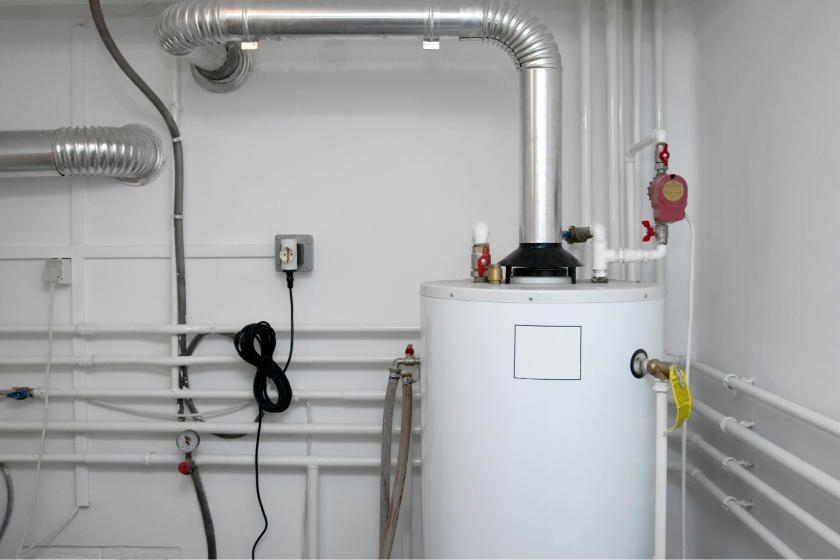Best Practices for Maintaining Your Home's Hot Water System
Best Practices for Maintaining Your Home's Hot Water System
Blog Article
We've noticed this article about What Kind of Maintenance Do Water Heaters Need? down the page on the web and figured it made perfect sense to talk about it with you here.

Hot water is vital for daily comfort, whether it's for a refreshing shower or washing meals. To ensure your warm water system runs efficiently and lasts much longer, routine maintenance is essential. This article provides sensible ideas and insights on just how to preserve your home's warm water system to prevent disruptions and pricey repair services.
Introduction
Preserving your home's warm water system might appear complicated, but with a few straightforward steps, you can ensure it operates efficiently for several years to find. This overview covers everything from understanding your hot water system to DIY maintenance tips and knowing when to contact expert help.
Relevance of Keeping Your Hot Water System
Normal upkeep not only prolongs the life expectancy of your hot water system however also ensures it operates efficiently. Ignoring upkeep can cause reduced effectiveness, higher power costs, and also premature failing of the system.
Indicators Your Hot Water System Needs Upkeep
Recognizing when your hot water system requires interest can avoid significant problems. Look out for indicators such as inconsistent water temperature level, weird sounds from the heating unit, or rustic water.
Flushing the Hot Water Heater
Purging your water heater eliminates sediment build-up, boosting effectiveness and lengthening its life.
Monitoring and Changing Anode Rods
Anode rods prevent corrosion inside the tank. Inspecting and changing them when worn out is important.
Facility Issues Requiring Specialist Aid
Examples consist of significant leakages, electrical issues, or if your water heater is constantly underperforming.
Regular Professional Upkeep Benefits
Professional upkeep can include complete examinations, tune-ups, and making certain conformity with security standards.
Inspecting and Adjusting Temperature Settings
Adjusting the temperature settings makes sure ideal efficiency and security.
Do It Yourself Tips for Maintenance
You can do a number of maintenance tasks yourself to keep your warm water system in leading problem.
Looking for Leakages
Frequently evaluate pipes and links for leaks, as these can result in water damages and higher bills.
Understanding Your Hot Water System
Prior to diving right into upkeep tasks, it's helpful to understand the standard parts of your hot water system. Commonly, this consists of the water heater itself, pipelines, anode rods, and temperature level controls.
Monthly Maintenance Tasks
Regular regular monthly checks can help capture small problems prior to they intensify.
Checking Stress Alleviation Valves
Checking the stress relief valve guarantees it works correctly and avoids too much pressure buildup.
Shielding Pipes
Protecting warm water pipes minimizes warm loss and can conserve energy.
When to Call a Professional
While do it yourself upkeep is advantageous, some concerns require specialist experience.
Conclusion
Normal maintenance of your home's warm water system is necessary for efficiency, long life, and cost savings. By adhering to these tips and understanding when to look for expert aid, you can make certain a reliable supply of hot water without unanticipated disturbances.
How to Maintain an Instant Hot Water Heater
Before tinkering with your hot water heater, make sure that it’s not powered on. You also have to turn off the main circuit breaker and shut off the main gas line to prevent accidents. Also turn off the water valves connected to your unit to prevent water from flowing into and out of the appliance. 2. When you’re done, you have to detach the purge valves’ caps. These look like the letter “T†and are situated on either side of the water valves. Doing so will release any pressure that has accumulated inside the valves while at the same time avoid hot water from shooting out and burning your skin. 3. When the purge valves’ caps are removed, you have to connect your hosing lines to the valves. Your unit should have come with three hoses but if it didn’t, you can purchase these things from any hardware or home repair shops. You can also get them from retail stores that sell water heating systems. Read the user’s manual and follow it to complete this task properly. When the hosing lines are connected, open the purge port’s valves. 4. You should never use harsh chemical cleaners or solutions when cleaning your unit. Make use of white vinegar instead. It should be undiluted and you’ll probably use about 2 gallons. 5. Now flush your water heater. This task should probably take about 40 minutes. We can’t give you specific directions for this because the procedure is carried out depending on the type, model and brand of your heater. With that being said, refer to the user’s manual. 6. When you’re done draining the unit, you have to turn off the purge port valves again. Remove the hosing lines that you earlier installed on each of the water valves. Put the valve caps (purge port) back in their respective places and be very careful so as not to damage the rubber discs that are found inside these caps. 7. Now that everything’s back in place, check your user’s manual again to find out how to reactivate your water heating system. 8. Once it is working, turn one of your hot water faucets on just to let air pass through the heater’s water supply pipes. Leave the tap on until water flows smoothly out of it. https://www.orrplumbing.com/blog/2014/september/how-to-maintain-an-instant-hot-water-heater/

I am very drawn to Water Heater Maintenance Tips You Can't Afford to Forget and I am praying you liked the entire piece. Appreciated our write-up? Please quickly share it. Let another person check it out. Thank you so much for going through it.
Go Services Report this page